Volume 5 | Number 2 | November 2013
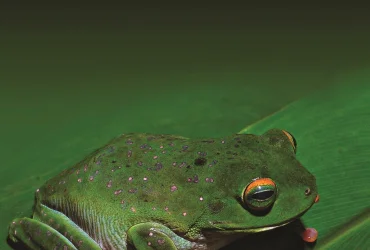 v5i2.114
v5i2.114ISSN: 1800-427X (print)
eISSN: 1800-427X (online)
DOI:10.47605/tapro.v5i2.114
Submitted date: 20 May 2013
Accepted date: 18 November 2013
Published date: 25 December 2013
Pp. 148–150, Pls. 6–7.
Syzygium rama-varma (Myrtaceae) from southern Western Ghats, India
S.M. Shareef*, P.E. Roy, E.S.S. Kumar & M.V. Krishnaraj
*Corresponding author. E-mail: smshariftbgri@gmail.com
Based on the collections from Travancore, India (Chemunji hills, Muthukuzhivayal Bourdillon s.n.), Bourdillon (1904) described and illustrated Eugenia rama-varma Bourd. (Myrtaceae, as “Rama Varma”, “named after H.H. [Mulam Thirunal Rama Varma] the Maharaja of Travancore”, with a comment: “a very handsome evergreen tree found at high elevation above 4000 ft”. Gamble (1919) transferred it to Jambosa, as J. rama-varma (Bourd.) Gamble. Later Chithra in Nair & Henry (1983) transferred it to Syzygium and made the combination S. rama-varma (Bourd.) Chithra (as “rama-varmae”).
Section Editor: James L. Reveal
eISSN: 1800-427X (online)
DOI:10.47605/tapro.v5i2.114
Submitted date: 20 May 2013
Accepted date: 18 November 2013
Published date: 25 December 2013
Pp. 148–150, Pls. 6–7.
Syzygium rama-varma (Myrtaceae) from southern Western Ghats, India
S.M. Shareef*, P.E. Roy, E.S.S. Kumar & M.V. Krishnaraj
*Corresponding author. E-mail: smshariftbgri@gmail.com
Based on the collections from Travancore, India (Chemunji hills, Muthukuzhivayal Bourdillon s.n.), Bourdillon (1904) described and illustrated Eugenia rama-varma Bourd. (Myrtaceae, as “Rama Varma”, “named after H.H. [Mulam Thirunal Rama Varma] the Maharaja of Travancore”, with a comment: “a very handsome evergreen tree found at high elevation above 4000 ft”. Gamble (1919) transferred it to Jambosa, as J. rama-varma (Bourd.) Gamble. Later Chithra in Nair & Henry (1983) transferred it to Syzygium and made the combination S. rama-varma (Bourd.) Chithra (as “rama-varmae”).
Section Editor: James L. Reveal
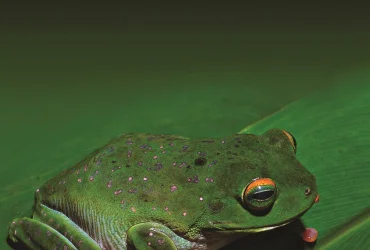 v5i2.113
v5i2.113ISSN: 1800-427X (print)
eISSN: 1800-427X (online)
DOI:10.47605/tapro.v5i2.113
Submitted date: 13 April 2013
Accepted date: 16 November 2013
Published date: 25 December 2013
Pp. 144–147, Pl. 5.
Taxonomic notes on two Jasminum species (Oleaceae) from India
E.S.S. Kumar & A. Sabeena
*Corresponding author. E-mail: santhoshkumares@gmail.com
During systematic studies of Jasminum L. in Kerala, the authors collected a curious species from the wild as well as from cultivation. Critical study based on relevant literature and type material allowed us to identify the plant as J. azoricum L. Consultation of other regional herbaria in India revealed that several similar specimens were erroneously determined as J. flexile and many sheets of J. flexile were identified as J. azoricum. Searching the literature and other regional floras showed considerable confusion about the identity of these two species in India.
Section Editor: James L. Reveal
eISSN: 1800-427X (online)
DOI:10.47605/tapro.v5i2.113
Submitted date: 13 April 2013
Accepted date: 16 November 2013
Published date: 25 December 2013
Pp. 144–147, Pl. 5.
Taxonomic notes on two Jasminum species (Oleaceae) from India
E.S.S. Kumar & A. Sabeena
*Corresponding author. E-mail: santhoshkumares@gmail.com
During systematic studies of Jasminum L. in Kerala, the authors collected a curious species from the wild as well as from cultivation. Critical study based on relevant literature and type material allowed us to identify the plant as J. azoricum L. Consultation of other regional herbaria in India revealed that several similar specimens were erroneously determined as J. flexile and many sheets of J. flexile were identified as J. azoricum. Searching the literature and other regional floras showed considerable confusion about the identity of these two species in India.
Section Editor: James L. Reveal
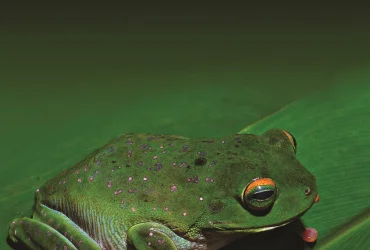 v5i2.112
v5i2.112ISSN: 1800-427X (print)
eISSN: 1800-427X (online)
DOI:10.47605/tapro.v5i2.112
Submitted date: 1 May 2013
Accepted date: 12 October 2013
Published date: 25 December 2013
Pp. 142–143.
Alectra chitrakutensis (Orobanchaceae) in Bundi District, Rajasthan, India
S.K. Sharma* & R.C. Bhutya
*Corresponding author. E-mail: sksharma56@gmail.com
While surveying floral diversity of Bundi district in southeastern Rajasthan, we noticed, on 6 March 2008, a parasite on the roots of Vitex negundo L.. The parasitic plant was seen at Rain village (25º3823.10N, 75º4034.09E; 286 m a.s.l.) in Hindoli tehsil of Bundi District, 22 km north from Bundi, on a field bund. Terrain of the field was quite flattish having a small rainy seasonal nallah on its eastern edge that is close to a government primary school building. Vitex negundo L., Woodfordia fruticosa (L.) Kurz and Mimosa himalayana Gamble were commonly growing along the banks of the nallah and on bunds of the field. The site was continuously checked during winter, summer and rainy seasons to observe the species’s growth pattern until 2011. The parasitic plant starts appearing in the root zone of V. negundo at the end of the rainy season, and fruits at the beginning of the summer season. Winter is the best time to see this plant when it flowers massively. This plant is an erect herb, with purple scale-like leaves and yellow, sessile flowers in a terminal raceme. The three purple streaks on each petal are diagnostic. Aerial parts of young plants initially appear greenish-white, but soon turn purple. The stems are rhizomatous with numerous axillary buds. On digging, fresh rhizomes are orange-yellow in colour. After drying, they become black. The species was identified as Alectra chitrakutensis (Rau) R. Prasad & R.D. Dixit, 1993. Locally it is known as negad ki bunti.
Section Editor: James L. Reveal
eISSN: 1800-427X (online)
DOI:10.47605/tapro.v5i2.112
Submitted date: 1 May 2013
Accepted date: 12 October 2013
Published date: 25 December 2013
Pp. 142–143.
Alectra chitrakutensis (Orobanchaceae) in Bundi District, Rajasthan, India
S.K. Sharma* & R.C. Bhutya
*Corresponding author. E-mail: sksharma56@gmail.com
While surveying floral diversity of Bundi district in southeastern Rajasthan, we noticed, on 6 March 2008, a parasite on the roots of Vitex negundo L.. The parasitic plant was seen at Rain village (25º3823.10N, 75º4034.09E; 286 m a.s.l.) in Hindoli tehsil of Bundi District, 22 km north from Bundi, on a field bund. Terrain of the field was quite flattish having a small rainy seasonal nallah on its eastern edge that is close to a government primary school building. Vitex negundo L., Woodfordia fruticosa (L.) Kurz and Mimosa himalayana Gamble were commonly growing along the banks of the nallah and on bunds of the field. The site was continuously checked during winter, summer and rainy seasons to observe the species’s growth pattern until 2011. The parasitic plant starts appearing in the root zone of V. negundo at the end of the rainy season, and fruits at the beginning of the summer season. Winter is the best time to see this plant when it flowers massively. This plant is an erect herb, with purple scale-like leaves and yellow, sessile flowers in a terminal raceme. The three purple streaks on each petal are diagnostic. Aerial parts of young plants initially appear greenish-white, but soon turn purple. The stems are rhizomatous with numerous axillary buds. On digging, fresh rhizomes are orange-yellow in colour. After drying, they become black. The species was identified as Alectra chitrakutensis (Rau) R. Prasad & R.D. Dixit, 1993. Locally it is known as negad ki bunti.
Section Editor: James L. Reveal
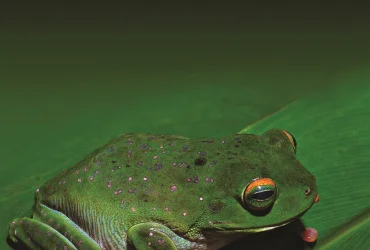 v5i2.111
v5i2.111ISSN: 1800-427X (print)
eISSN: 1800-427X (online)
DOI:10.47605/tapro.v5i2.111
Submitted date: 25 October 2013
Accepted date: 18 November 2013
Published date: 25 December 2013
Pp. 140–141, Pl. 4.
Rediscovery of Mallotus intercedens (Euphorbiaceae)
E.S.S. Kumar*, M.P. Geethakumary & A.G. Pandurangan
*Corresponding author. E-mail: santhoshkumares@gmail.com
The genus Mallotus Lour. is a large and complex paleotropical genus of about 150 species and are mainly distributed in Asia, Africa and Australasia to Fiji. In India it is represented by 17 species, of which Kerala harbours 12 species including two varieties.
Section Editor: James L. Reveal
eISSN: 1800-427X (online)
DOI:10.47605/tapro.v5i2.111
Submitted date: 25 October 2013
Accepted date: 18 November 2013
Published date: 25 December 2013
Pp. 140–141, Pl. 4.
Rediscovery of Mallotus intercedens (Euphorbiaceae)
E.S.S. Kumar*, M.P. Geethakumary & A.G. Pandurangan
*Corresponding author. E-mail: santhoshkumares@gmail.com
The genus Mallotus Lour. is a large and complex paleotropical genus of about 150 species and are mainly distributed in Asia, Africa and Australasia to Fiji. In India it is represented by 17 species, of which Kerala harbours 12 species including two varieties.
Section Editor: James L. Reveal
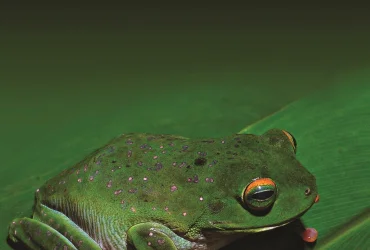 v5i2.110
v5i2.110ISSN: 1800-427X (print)
eISSN: 1800-427X (online)
DOI:10.47605/tapro.v5i2.110
Submitted date: 8 May 2013
Accepted date: 31 October 2013
Published date: 25 December 2013
Pp. 138–139, Pl. 3.
Rediscovery of Henckelia macrostachya (Gesneriaceae) from Kerala, India
T. Shaju, M. Rajendraprasad, S.M. Shareef, A.R. Beegam & A.G. Pandurangan
*Corresponding author. E-mail:
During the recent floristic exploration to Anaimudi and its surroundings, the highest peak in southern India, one of the authors collected a gesneriad herb from Pettimudi at an altitude of 2000 m in the Idukki District of Kerala State. The taxonomic identity of the specimen has been determined as Henckelia macrostachya (E. Barnes) A. Weber & B. L. Burtt (Didymocarpus macrostachya E. Barnes). Subsequent perusal of the literature and consultation of different herbaria (CAL, K, MH, TBGT), the present collection proved to be a rediscovery of the species after a lapses of 75 years from its original collection. The species was collected at Ottaparai Ridge at an altitude of 5500 feet near Munnar, the foothills of the Anaimudi Range. The species could not be located although the area has been well explored by various authors and therefore was treated recently as possibly extinct. The rediscovery of the species confirmed its existence in the wild and hence assumes significance from conservation point of view. Based on the field observation, morphological assessment, and a nomenclatural review, a detailed description is provided with illustration and photographs to facilitate its identification.
Section Editor: James L. Reveal
eISSN: 1800-427X (online)
DOI:10.47605/tapro.v5i2.110
Submitted date: 8 May 2013
Accepted date: 31 October 2013
Published date: 25 December 2013
Pp. 138–139, Pl. 3.
Rediscovery of Henckelia macrostachya (Gesneriaceae) from Kerala, India
T. Shaju, M. Rajendraprasad, S.M. Shareef, A.R. Beegam & A.G. Pandurangan
*Corresponding author. E-mail:
During the recent floristic exploration to Anaimudi and its surroundings, the highest peak in southern India, one of the authors collected a gesneriad herb from Pettimudi at an altitude of 2000 m in the Idukki District of Kerala State. The taxonomic identity of the specimen has been determined as Henckelia macrostachya (E. Barnes) A. Weber & B. L. Burtt (Didymocarpus macrostachya E. Barnes). Subsequent perusal of the literature and consultation of different herbaria (CAL, K, MH, TBGT), the present collection proved to be a rediscovery of the species after a lapses of 75 years from its original collection. The species was collected at Ottaparai Ridge at an altitude of 5500 feet near Munnar, the foothills of the Anaimudi Range. The species could not be located although the area has been well explored by various authors and therefore was treated recently as possibly extinct. The rediscovery of the species confirmed its existence in the wild and hence assumes significance from conservation point of view. Based on the field observation, morphological assessment, and a nomenclatural review, a detailed description is provided with illustration and photographs to facilitate its identification.
Section Editor: James L. Reveal
Hubungi Kami
The ultimate aim of the journal is to provide an effective medium for communication of the latest and best scientific information.
Copyright © 2020 Taprobanica. All Rights Reserved
Jasa Pembuatan Website by IKT




